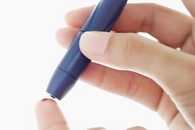Human breath contains a range of volatile organic components,which can help to provide useful information for diagnosis of various diseases,it has been found.

The Korea Advanced Institute of Science and Technology has reached a new breakthrough with its analysis in the field,finding that H2s,ammonia and toluene can be used as biomarkers for evaluating diseases,halitosis,kidney malfunction and lung cancer
Breath analysis can also be used as an increasingly accurate diagnostic method,linking specific gaseous components in human breath to medical conditions and exposure to chemical compounds,reports Nanowerk.
Sampling breath is also much less invasive than testing blood and can be carried out very quickly,resulting in a minimal amount of biohazard waste.
The critical advantage of exhaled breath analysis is that it enables non-invasive disease diagnosis.
Thanks to this,methods such as gas chromatography/mass spectroscopy and optolectronic analysis have been utilised to detect sub-ppm level VOCs in exhaled breath.
Also,these techniques are limited for use in real-time diagnosis with portable devices due to bulky device size and complicated measuring approaches.
Speaking to Nanowerk,Il-Doo Kim,an assistant professor in the Department of Materials Science and Engineering at Korea Advanced Institute of Science and Technology,said:"One of the promising detecting tools for exhaled breath is metal oxide based chemiresistive gas sensors.
"When chemiresistive sensors are exposed to oxidizing or reducing analyte gases,sensor resistivity is changed as a function of temperature as well as of trace gas concentration.
"The advantage of chemiresistive sensors is that they can offer greater usability for portable real-time breath sensors thanks to their miniaturized size,low cost,easy fabrication,and simplicity of operation,"Mr Kim explained.
The team's sensor test results for acetone detectability are roughly 0.1ppm,meaning it is eight times lower than the required gas-sensing level for diagnosing diabetes.
This news comes after the US Pharmacopeial Convention revealed new revisions for its omega 30rich krill oil and natural,low calorie stevia sweeteners.
These alterations have been made to the Food Chemicals Codex(FCC),with the proposals including a chromatography test for the quantitative assessment of caffeine content in coffee.


